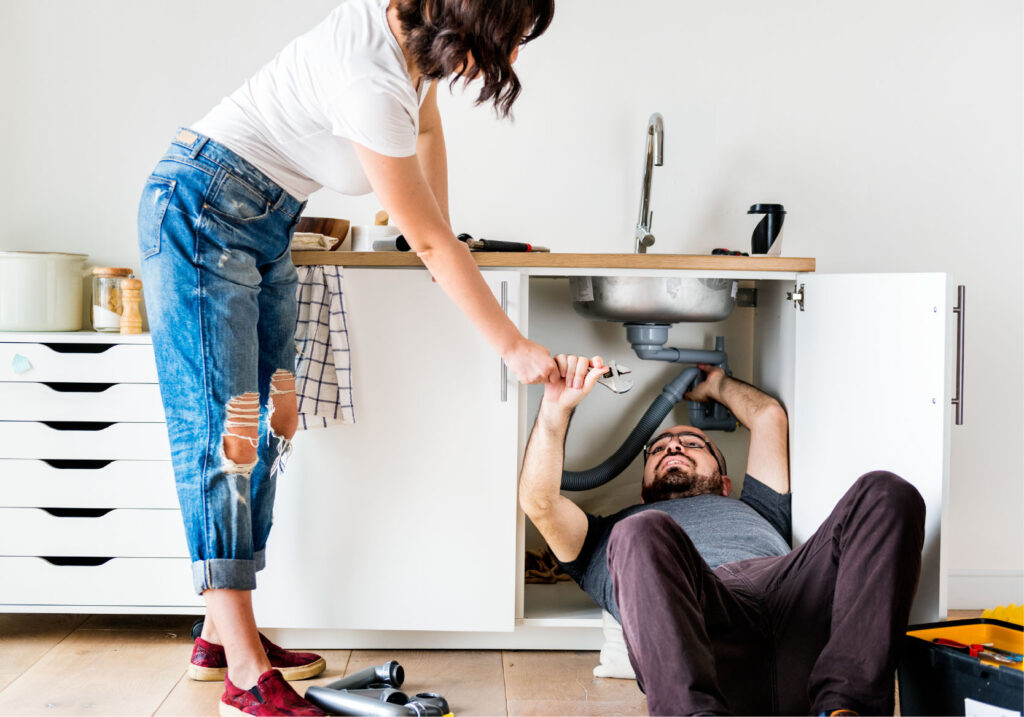From keeping up with your day-to-day chores to attending to seasonal projects, home maintenance certainly takes plenty of time and effort. Keeping a house in good repair can sometimes feel like a full-time job, but not every task has to take hours. In fact, some of the most important preventative checks, like checking your plumbing fixtures, take just a few minutes.
One of the most common and costly issues homeowners face is plumbing leaks. Left unchecked, even a small drip can cause serious water damage, mold growth, and inflated utility bills. The good news is, you don’t need to be a plumber to spot the early signs. Here’s a quick step-by-step guide to check your sinks and toilets for leaks, and potentially save yourself thousands in repairs.
Step #1: Check That the Faucet Pipe Is Mounted Securely
Start at your sink. Locating your faucet, gently grasp the pipe where it connects to the sink basin and try shaking it. Gaps and movement are a red flag, and a sure opportunity for leaks. A loose or unstable faucet pipe should be tightened or resealed as soon as possible.
Step #2: Turn On the Faucet and Check for Seepage
Next, turn on the water at full pressure and leave it running for a full minute. Watch the faucet and confirm whether seepage occurs at its base or at any joints throughout the faucet system. Even a small leak could mean something just needs tightening, but if it persists, hardware replacement may be in order.
Step #3: Watch for Drainage
As the water drains, observe how quickly the sink basin empties while also monitoring for any leaks in the piping underneath. Faucet and pipe leaks are among the most common sources of water waste, contributing to the 10,000 gallons of water wasted each year, according to the EPA.
Of course, quick and problem-free drainage is ideal. Slow drainage or standing water, on the other hand, could indicate a clog, which not only causes inconvenience but also increases pressure in your pipes–leading to corrosion and leaks over time. Don’t let slow drainage stand. Catch it early before a minor blockage becomes a costly repair.
Step #4: Check the Trap Below the Sink
Looking further at the piping under your sinks, let’s talk about the P-trap. Among your white PVC pipes, you should be able to spot a “U”-shaped pipe which is designed to actively hold water and block harmful (and smelly!) sewer gases from entering the home. P-traps are a common spot for clogs and leaks, so it’s worth giving them a quick check. Just like with your faucet pipes, check your traps for movement, damage, or loose fittings.
A secure and stable trap means better performance and fewer unpleasant surprises down the road.
Step #5: Rock the Toilet Back and Forth
After your sinks, toilets are another major source of household water loss. A quick way to check for potential leaks is by testing how stable the toilet is. Stand with a foot on either side of the bowl and rock the toilet back and forth to watch for movement. Half an inch or so of movement can be fixed fairly easily by tightening the flange bolts or resealing the wax ring at its base.
Staying on top of home maintenance doesn’t have to be overwhelming. With just a few minutes and the right know-how, you can prevent costly problems before they start.
For more quick and easy tutorials, be sure to check out our last Maintenance Minutes article.
Looking for top-tier support for your next home inspection? National Property Inspections is a top name, providing service across the U.S. Find a certified inspector near you and schedule your buyer’s inspection today!



